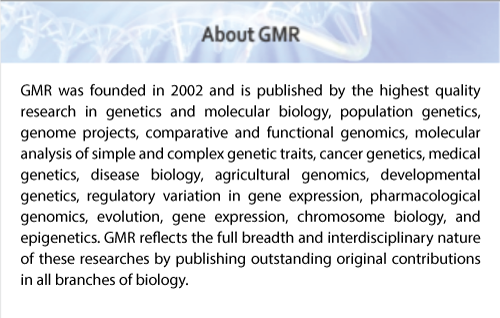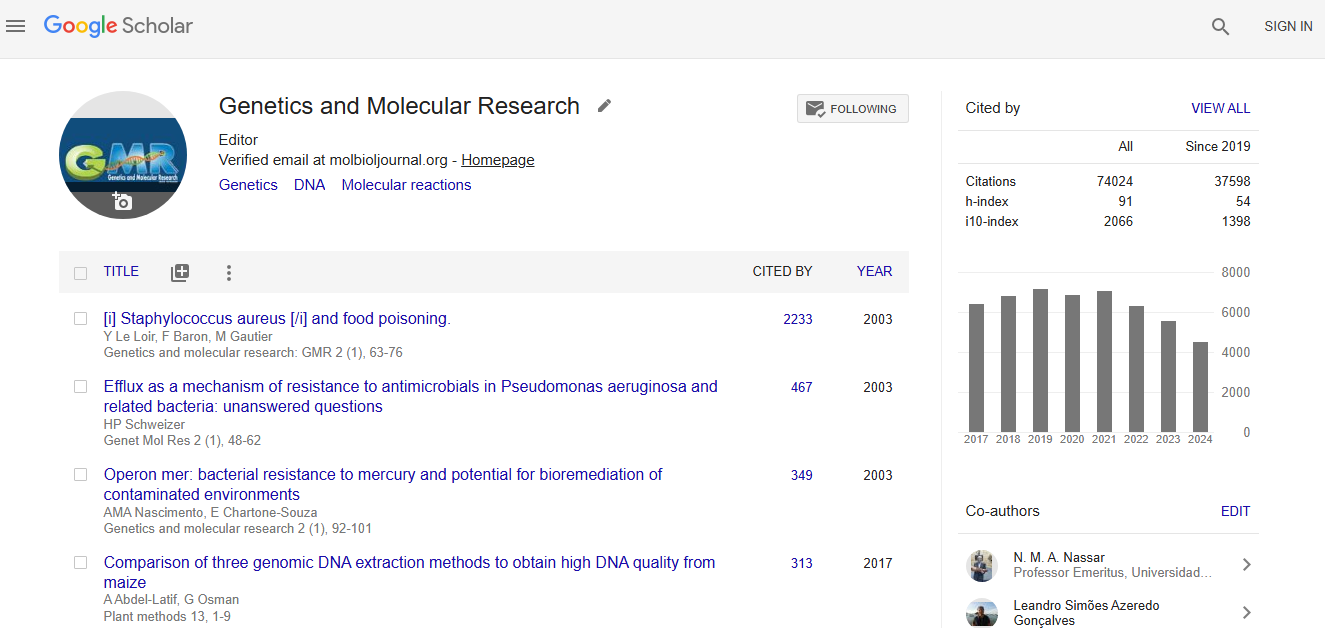Abstract
Development and characterization of microsatellite markers for the lizardfish known as the Bombay duck, Harpadon nehereus (Synodontidae)
Author(s): T.J. Xu, D.Q. Sun, H.Y. Li and R.X. WangThe Bombay duck, or bummalo (Harpadon nehereus), is a lizardfish native to the Arabian sea, but also common in the China sea. It is normally dried and salted before consumption and export. To provide molecular information on this economically important fish species, we developed and characterized microsatellite markers. Ninety positive clones from the (CA)15-enriched genomic library were sequenced; 62 sequences contained sufficient repeat motifs (di-, tri- and tetra-nucleotide). Twenty-eight primer pairs were designed and 21 were successfully amplified; five loci were polymorphic, but with a low number of alleles (three or four). The observed and expected heterozygosities ranged from 0.3500 to 0.8421 and from 0.5244 to 0.6244, respectively. All of the five polymorphic loci were at Hardy-Weinberg equilibrium (adjusted), while linkage disequilibrium between Hane-97 and Hane-175 (P < 0.05, adjusted P value = 0.01) was significant. The low degree of polymorphism of microsatellite markers may be due to the large size of the repeat motifs. These markers will be useful for genetic diversity analysis of H. nehereus.
Impact Factor an Index

Google scholar citation report
Citations : 74024
Genetics and Molecular Research received 74024 citations as per google scholar report
